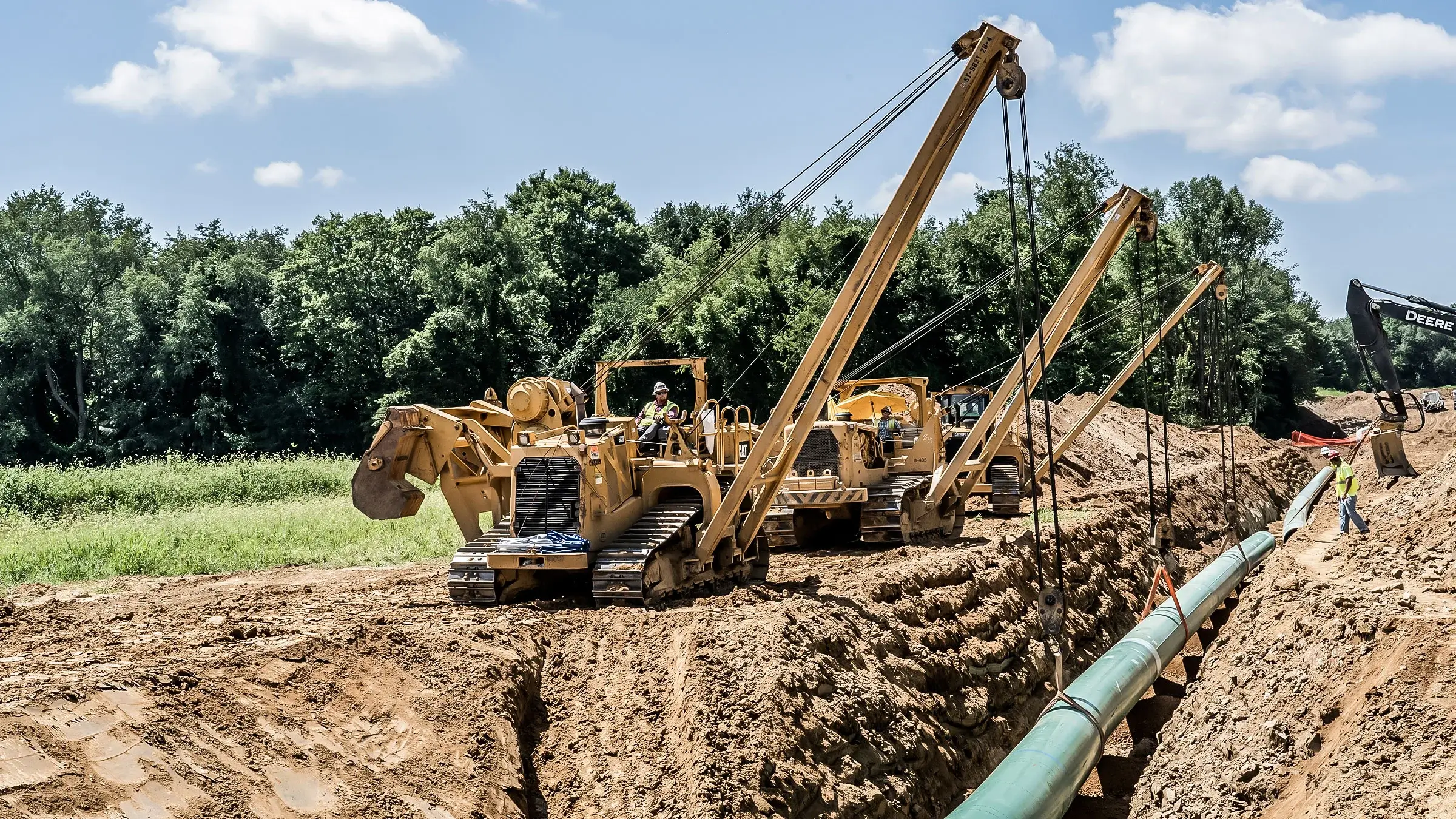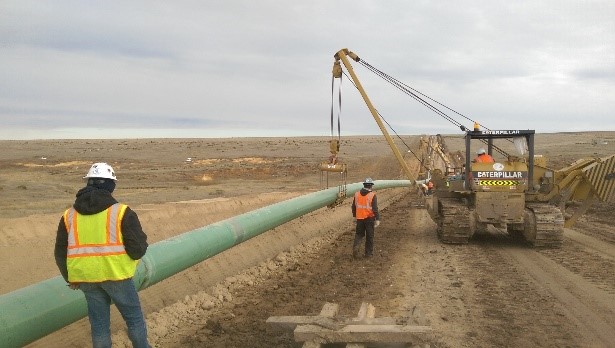What’s Needed for Professional Work With Creek Pipe Texas oilfield
The Importance of Pipeline Construction: Discovering the Solutions Offered in the Sector
Pipeline construction is a critical part of contemporary infrastructure. It facilitates the transport of necessary resources like oil, gas, and water. The sector includes various solutions, including preparation, site prep work, and installation. Each phase requires precision and adherence to safety and security standards. As areas depend on these systems for their livelihoods, comprehending the intricacies of pipeline construction discloses its significance and potential challenges. What aspects affect the success of these tasks?
Summary of Pipeline Construction Services
Pipeline construction services include a variety of specialized activities designed to assist in the installment of pipelines for moving numerous substances, consisting of oil, gas, and water. These services typically include website prep work, excavation, setup of pipeline segments, and backfilling. Knowledgeable labor and sophisticated tools are essential for ensuring each phase is carried out with accuracy and safety.Safety procedures are paramount, as these jobs frequently involve collaborating with hazardous materials and in tough environments. Quality assurance measures ascertain that the pipes fulfill market requirements and regulations. In addition, the solutions may involve trenchless technology, which minimizes surface disruption.Environmental considerations play a substantial role in pipe construction, needing evaluations and mitigations to shield bordering ecological communities. Generally, pipe construction services are vital for establishing the framework required for power and water circulation, supporting both financial development and societal demands.
Preparation and Layout in Pipeline Projects
Efficient preparation and layout are vital elements of effective pipeline jobs, making sure that all facets are thoroughly addressed prior to construction begins. This phase includes extensive usefulness researches that analyze the technological, financial, and ecological variables affecting the task. Engineers and designers work together to develop comprehensive plans that detail the pipe path, materials, and construction techniques, aligning with regulative demands and market standards.Advanced software program and modeling techniques are frequently used to replicate various scenarios, enhancing the design for efficiency and safety. Ecological impact analyses are performed to alleviate potential harm to communities and areas, reflecting a dedication to lasting methods. Furthermore, stakeholder involvement is vital, promoting communication and addressing issues from affected parties. Ultimately, efficient preparation and design set the structure for a pipe project, decreasing threats and making certain a structured construction process, inevitably adding to the total success of the operation.
Site Prep Work and Excavation
Comprehensive website prep work and excavation are essential steps in the pipeline construction process. This phase includes an in-depth analysis of the land where the pipe will certainly be mounted. Task groups perform studies to identify soil kinds, topography, and existing energy lines to assure a safe and efficient excavation. Proper site preparation reduces environmental effect and assists in smoother construction operations.Excavation complies with, where heavy machinery is utilized to eliminate soil and rock, producing a trench that meets the specified depth and size for the pipeline. This process must abide by safety policies and ecological standards to protect against damage to surrounding ecosystems.Additionally, disintegration control procedures are applied to stabilize the site during and after excavation. Efficient site preparation and excavation contribute substantially to the total success of pipe tasks, laying a strong structure for the succeeding phases of construction.
Pipeline Installation Techniques
Pipeline installation methods are essential for the successful application of framework tasks. Two prominent approaches consist of trenchless innovation, which reduces surface disruption, and the open-cut excavation procedure, recognized for its uncomplicated technique. Each method offers distinct benefits and factors to consider relying on job demands and environmental variables.
Trenchless Modern Technology Approaches
While typical approaches of pipe installment often involve extensive excavation, trenchless technology techniques provide a more efficient and eco-friendly choice. These innovative methods, such as straight directional exploration and pipe bursting, decrease surface disturbance by allowing for the setup of pipelines without substantial excavating. This not only minimizes the environmental effect yet also considerably reduces labor and repair prices. Trenchless methods assist in the installment of pipelines in metropolitan locations where typical excavation would be unwise or destructive to existing infrastructure. Additionally, these methods can suit various soil kinds and problems, making them flexible options for pipe construction. Eventually, trenchless technology stands for a substantial improvement in the pipeline sector, advertising sustainability and operational effectiveness.

Open-Cut Excavation Process
Open-cut excavation remains a basic method in pipe installation, characterized by the direct excavation of a trench to lay pipes. This method entails getting rid of dirt and other products to create a trench of sufficient deepness and size, permitting the placement of pipelines at the called for grade. Open-cut excavation is commonly favored for its cost-effectiveness and simpleness, particularly in locations with steady dirt conditions. However, it can disrupt surface area tasks and needs careful preparation to take care of traffic and ecological influences. Precaution need to be implemented to secure employees and neighboring framework throughout the excavation procedure. In general, while open-cut excavation may not appropriate for all terrains, it remains an extensively utilized strategy in pipeline construction.
Checking and Quality Control
Checking and quality control are essential elements in pipe construction, making certain that setups fulfill well established safety requirements and performance demands. Numerous evaluation strategies and techniques are used to evaluate worldly quality and adherence to governing compliance. This methodical approach helps determine potential problems prior to they escalate, securing the integrity of the pipe system.

Examination Techniques and Approaches
Evaluation methods and techniques are important components in making sure the stability and security of pipe construction. Numerous methods, including aesthetic examinations, ultrasonic screening, and radiographic assessments, are utilized to find problems and validate high quality. Visual evaluations enable the recognition of surface area abnormalities, while ultrasonic testing makes use Your Domain Name of acoustic waves to evaluate wall density and locate imperfections inside. Radiographic exams include X-rays or gamma rays to generate photos of the pipeline's framework, disclosing concealed problems. Furthermore, stress screening is performed to evaluate the pipe's honesty under functional conditions. These approaches collectively add to a thorough understanding of the pipeline's problem, enabling timely maintenance choices and ensuring compliance with market criteria. Reliable evaluation is vital for preventing failures and promoting long-lasting functional safety and security.
Safety Standards Compliance
Guaranteeing compliance with safety standards is vital in pipeline construction, as it directly affects the job's total quality and integrity. Sticking to established regulations and standards assurances that construction methods reduce risks connected with pipe setup and operation. Creek Pipe trenching services. Extensive testing methods, consisting of non-destructive testing and stress evaluations, are important in confirming that pipes can stand up to the operational stresses they will certainly experience. Quality control actions are likewise vital, as they establish a structure for constant tracking and evaluation throughout the construction process. By prioritizing safety standards compliance, companies not only secure workers and the environment yet also enhance the honesty of the pipe, inevitably causing long-lasting operational success and public rely on the framework
Product Top Quality Examination
Product high quality analysis plays a considerable function in the general stability of pipeline construction. This procedure includes rigorous testing and quality guarantee steps to assure that products meet sector requirements and specs. Various tests, including tensile stamina, corrosion resistance, and weld honesty analyses, are conducted to identify any type of prospective weak points. A complete evaluation not only ensures the efficiency of the pipe but likewise boosts security and resilience over its life expectancy. In addition, implementing high quality control methods aids reduce threats connected with product failings, which can cause pricey repairs and ecological dangers. By prioritizing material quality examination, business can guarantee conformity with regulatory needs while fostering confidence among stakeholders in the dependability of their pipe systems.
Upkeep and Repair Services
Maintenance and repair work services play a vital function in the durability and effectiveness of pipeline systems. These services encompass normal examinations, repairing, and rehabilitative activities to attend to damage, leakages, and other issues that might emerge with time. Skilled technicians make use of innovative innovations such as ultrasonic testing and clever pigging to keep an eye on pipeline integrity, making certain that any kind of prospective issues are identified early.Additionally, maintenance programs often consist of arranged safety nets made to boost system dependability and decrease the possibility of unexpected failings. Repair services might include the replacement of broken areas, sealing leakages, or utilizing trenchless technology for marginal disruption.
Environmental Conformity and Precaution
Pipeline systems not only need continuous repair and maintenance to operate effectively but likewise must stick to stringent environmental compliance and precaution. These regulations are essential for minimizing ecological influence and guaranteeing public security. Business in the pipeline construction industry apply extensive ecological assessments before project initiation, determining potential threats to wildlife and ecosystems.Furthermore, adherence to safety protocols shields employees and bordering neighborhoods. This includes routine training on emergency situation feedback and spill avoidance techniques.To keep compliance, markets use keeping track of technologies to discover leaks and various other abnormalities in real-time. Ecological administration plans are frequently established to outline actions for attending to unanticipated concerns throughout construction.Ultimately, stringent adherence to environmental compliance and precaution not only satisfies lawful responsibilities however likewise fosters sustainable techniques within the sector, promoting an equilibrium in between facilities advancement and ecological stewardship.
Frequently Asked Inquiries
What Occupation Opportunities Are Readily Available in Pipeline Construction?
Career possibilities in pipe construction encompass roles such as project supervisors, designers, welders, and safety and security examiners. These settings need diverse skills, offering paths for development in a necessary industry of infrastructure advancement and power circulation.

Just How Do Pipeline Projects Influence Citizen Communities?
Pipeline tasks considerably affect neighborhood neighborhoods by influencing financial growth, supplying job possibilities, and improving infrastructure. They might likewise increase concerns about ecological results, land use, and possible disturbances to neighborhood cohesion and natural ecosystems.
What Innovation Is Used in Modern Pipeline Construction?
Modern pipeline construction makes use of advanced innovations such as GIS for mapping, drones for airborne surveys, and automated welding systems to improve efficiency, security, and accuracy, inevitably assisting in the reliable transportation of sources throughout various terrains. Creek Pipe Texas oilfield.
Just How Are Pipeline Construction Costs Approximated?
Pipeline construction prices are estimated with thorough evaluations of products, labor, tools, reach trucks and regulatory needs. Elements More Help like surface, job dimension, and ecological considerations additionally considerably influence the total spending plan and financial planning for construction.
What Are the Biggest Difficulties in Pipeline Construction Projects?
The greatest obstacles in pipe construction projects include regulatory compliance, environmental issues, logistical problems, protecting financing, and managing labor shortages. Each element can considerably influence timelines and budgets, making complex the general execution of the job.